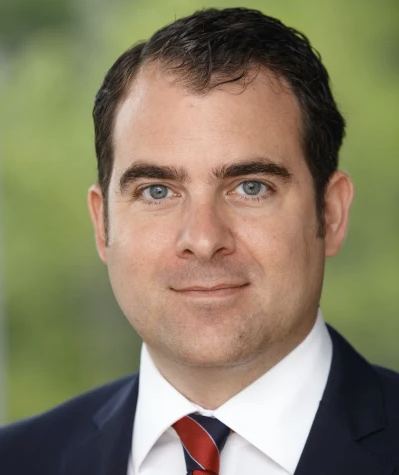Founded in 1987, IMTF develops best in-class RegTech solutions in the area of anti-financial crime, AML and CTF to help financial institutions stay compliant and digitalise their processes and operations to improve customer experience and reduce regulatory risk.
The genesis for the creation of IMTF came from early anticipation of market needs, strategic partnerships, and a commitment to tech innovation in the financial sector. This is according to Sebastian Hetzler, the co-CEO of IMTF.
Established in 1987, IMTF initially developed in the field of document management and process automation for the banking and financial services industries. In 2002 IMTF entered a reseller and implementation partnership with the German company Tonbeller that just launched its first version of SironAML, a transaction monitoring solution that should become one of the leaders in the AntiFinancial Crime Compliance field in the years to follow.
While the Siron suite of products evolved, IMTF developed complementary solutions building on IMTF’s competencies in document and process management space. In 2017 IMTF launched its comprehensive digital onboarding solution ICOS, which is used by many private and wealth management banks around the globe.
In 2022 IMTF acquired the Siron business from the USbased Fair Isaac Corporation (FICO) building a global business with 300 compliance specialists. Hetzler explained, “IMTF’s acquisition of FICO’s Siron business marked a turning point: building on the significant global market footprint left by FICO, IMTF became one of the leading international players in the market for antifinancial crime solutions. Intensive integration efforts over the next 18 months culminated in the launch of Siron®One, a unified platform merging IMTF and Siron’s strengths.”
Pain points
To date, IMTF has more than 1500 financial institutions globally that use its software. Hetzler adds, “For this large customer base, we are the partner in anti- financial crime and help them to be more efficient in this domain as well as more effective against financial crime.”
The IMTF co-CEO explains further, “On the one hand, all financial institutions have the comply with international and local financial crime regulations. On the other hand, they are economic entities that can’t spend endless amounts to fulfil this duty. Technology can help to bridge the gap between the two contrary requirements. It’s our mission at IMTF to identify, understand and apply new technologies like machine learning and GenAI in antifinancial crime to help financial institutions to excel at the fight against financial crime at lowest possible costs.”
The selling point
How does IMTF set itself apart from the competition in the FinCrime market? According to Hetzler, one key area surrounds its approach to anti-financial crime.
He explained, “We always followed a holistic approach to anti-financial crime, which means we are looking at all the relevant use-cases, be it customer screening, enhanced due diligence, transaction monitoring, fraud, sanction screening and so on, in an integrated way. This unique approach offers many benefits to financial institutes in terms of functional synergies, cost reduction and effectiveness by leveraging data across the whole platform. This definitely sets us apart from competitors.”
The second area of differentiation is in the high standardisation of IMTF’s solutions. IMTF always favour flexibility and product configuration over customisations because it helps its clients keep pace with the latest innovations.
He explained, “Due to the pace of technological innovation and regulatory changes, we come up with new features and functionalities on a quarterly basis. We recommend our clients to upgrade their solutions at least once in three years to go with the regulation but also to go with the innovation – something we believe can only be achieved if you have standardised products.”
Siron is one of the most widely-used anti-financial crime solutions in the market, professed the firm’s coCEO, and supports financial institutions of all sizes, be it regional, multinational or global. Besides the scalability, the software stands out in the market due to its multitypology approach and flexibility. IMTF’s customer base spans across verticals such as retail banking, private banking and wealth management, corporate banks but also universal banks, insurances and corporates. The company also works with exchanges, payment platforms, and online lenders amongst others.
He added, “All of our clients benefit from the innovations that we bring to market due to the fact that we are covering so many financial crime typologies. In addition, we strictly follow a low-code or no-code approach, which means that our customers can run the software by themselves, resulting in the lowest total cost of ownership in the market.”
Future plans
As IMTF looks towards the horizon, what does the firm see in its future? The key watchword for Hetzler was AI and specifically, Generative AI.
He explained, “Though, the technology is around for several years, it’s only now that we see a broader interest in these new approaches.The big challenge to make AI a game changer in the anti-financial crime space is to make it accessible more easily and cheaper for all players in the market. What I mean by this is that for the tier two and tier three banks, it’s much harder to establish and maintain an AI-driven AML-program than it would be for tier ones as they don’t have deep pockets or the data scientists. Our focus is to ensure that even smaller financial institutions can reap the full benefits without having to invest a fortune.”
IMTF is also working on improving its user experience across the full integrated suite. Hetzler gave an example of leveraging information available about clients in KYC and using this for transaction monitoring. “If an economic network unfolds for example between companies and beneficial owners, you can extract this data and enrich decisions that you are making on the transaction monitoring side or on the sanction screening side,” he explained.
The third area of focus for IMTF is the reduction of implementation times through Software-as-a-Service (SaaS) offering or containerisation. Hetzler said, “We come with containerisation of our platform so that we are able to implement more quickly and easily. We also scale the software to react to peak times and spin up a new container if required, and then wrap it down once the peak is over. So, efficiency is super important to us.”
Sanctions and money laundering
Hetzler also took the time to underline the role IMTF can play in facing down a key challenge in the industry of increasingly complex money laundering cases and patterns.
With sanctions exploding into the limelight following the onset of the Russia-Ukraine war, sanctions evasion has also become more prominent on the industry consciousness.
Defining sanctions evasion, Hetzler stated, “Since there are so many sanction parties, criminals try to find ways around sanctions with shell companies set up in countries that have a less stringent sanctions regime. This is the difficult piece for banks and FIs, because they now have to identify and understand ownership structures, beneficial owners, past behaviours and sanctions.”
Here, Hetzler believes IMTF can play a key role, as its USP lies in the integration of all processes and data – KYC, transaction monitoring, sanctions screening and more – allowing banks to use these integrated data to identify cases of sanctions evasion.
Beyond this, the IMTF co-CEO explained that ‘nitty gritty’ money laundering schemes are now moving over to larger money laundering schemes – such as trade-based money laundering. Criminals are using the complex nature of international trades to circumvent sanctions and to launder money.
Copyright © 2024 RegTech Analyst
Copyright © 2018 RegTech Analyst



